Costa Rica: Unpopular with Cruisers??
- Kay Hunt
- Apr 23
- 6 min read

We’ve heard two tones when people report on visits to Costa Rica. Those who have travelled there via plane and stayed on land have reported that it is awesome. Cruisers often have less enthusiasm. While in Chiapas, Mexico, a northbound cruiser said to us, “Costa Rica…hmm…it will be interesting to see how you like it.” Not exactly a warm fuzzy as we headed to our next big destination. We were eager to judge for ourselves.
Having left the lush green landscape of southern Mexico, we were surprised by the dry landscape at Marina Papagayo in Northern Costa Rica’s Guanacaste Province. This is the dryest region of Costa Rica, and we were well into the dry season of Dec-Apr, so the hills were quite brown—we even noticed some cactus on them! Perhaps because of the less frequent rain, this is the locale for many luxury hotels and resorts. As a marina guest, we had access to the lovely beaches and restaurants at a few nearby resorts, which we enjoyed after our recent long passage. However, sky high price tags attached to that access as well as most nearby restaurants, shops, and land transportation took an oversized bite out of our monthly cruising kitty. The well-heeled tourist economy has prices inflated throughout most of the country.
We made three nice stops at anchorages heading south out of Papagayo where we enjoyed swimming, snorkeling, and paddleboarding. One of the most pleasant was Danta Bay, where we could paddle into shore to the lovely Los Catalinas development. This recently built village is well situated to enjoy the great mountain biking and hiking in the area and is filled with beautiful villas, restaurants that reminded us of an upscale ski village filled with tourists and part-time residents. We loved the hiking, the beach, and the restaurants. I was able to replace my blown-out flip-flop at the Patagonia store. We had a great time but almost forgot we were in Central America and couldn’t help but think that it lacked a bit in local culture.
We took advantage of having our boat secured in a couple marinas to take some inland excursions. Highlights were a guided hike in Manuel Antonio National Park, a hanging bridge hike near Miravalles Volcano, a visit to Las Pumas Wildlife Sanctuary, a stay in the Monteverde cloud forest at an eco-lodge, a night hike through the jungle, and stops along our drive at a couple very interesting local establishments that were part restaurant, part museum, part local artisan markets. The owners of these places were so welcoming and did a great job helping visitors appreciate and learn about the history of the area, including the extensive gold mining past, the efforts to clean up local rivers, and how they have transitioned properties to meet today’s high standards of environmental stewardship.
Making our way southeast, we made a few stops along the Nicoya Peninsula, noticing that the hills were getting greener with the rising humidity. We spent several days in Ballena Bay, a great stop. We anchored in front of the cruiser friendly Los Vivos Beachfront Experience. The owners, having been cruisers themselves in the 1960’s, welcome visitors from passing boats to their little slice of jungle heaven. They have been discovered, and tour boats bring folks from nearby hotels to enjoy the sunset while sitting on a beach swing with a cocktail. The crowd did little to diminish the beauty of the sun setting behind the green mountains and dispersed soon after sunset. On the southern end of this bay was the small town of Tambor, which was a very authentic fishing village. The fishermen tolerated us tying up to their pier and we were able to stock up on nice fresh produce at their small Saturday farmer’s market.
Birding was a highlight of Costa Rica, and by the end I added 14 new birds to my life list (birds I see with my own eyes long enough to positively ID). Some of the best was during a dinghy trip into the mangrove estuary in Ballena Bay. We timed it to drift in with the end of the rising tide and drift out as it began to ebb. Without the motor, we could ghost along and see and hear the wildlife. We identified Scarlet Toucans, Green Herons, Great Kiskadees, and Rufous-backed Wrens.
Another nice stop along this peninsula was at Bahia Curu, with its beach access to Curu Wildlife Refuge. We had an awesome hike here, spotting spider monkeys, pecaries, very loud howler monkeys and an amazing array of jungle insects and birds. Drenched in sweat by the end, we were grateful for the refreshing milkshakes served at the small restaurant in the park. Iced coffee drinks and refreshing smoothies and milkshakes are commonplace in Costa Rica.
We had a couple of long, hot days travelling to the Golfito peninsula for our final stops in Costa Rica. Sailing along this coast has been a challenge with notably light wind at our stern. We would try to will the wind to fill our sails, but alas, they would often lay limp, and we would barely move. On days when we needed to cover longer distances, we had no choice but to motor and with the light wind behind us, we would barely feel a puff in the sweltering heat. The motor remains warm for 24 hours, adding to the heat in the boat. An immediate jump into the ocean upon arrival at a new anchorage provided relief, despite the 86-degree water temps. We have needed to use our generator for 1-2 hours each evening to power our A/C and get a jump on cooling the boat down for the night.
The heat has been hard on some of our gear as well. We are limping to the finish line with Ol’ Stinky, our dinghy. High heat and UV damage have caused several seam failures, and an oar fell off at an inopportune moment when the glue holding the attachment piece failed. We inherited this dinghy of mediocre quality with our boat and plan to replace it next fall. Covered in patches, peeling UV protective paint, and flexible epoxy, it is quite a sight. We don’t take it far and always carry the air pump. We also had to replace one of our paddleboards which had similar issues. We have realized how critical protective covers are for inflatable longevity.
Surfing is a popular activity in Costa Rica, but the waves that make it great are the same waves that cruisers bemoan. Although we found several comfortable anchorages, many were rolly, including Golfito’s Drake Bay, where we had arranged to have a boat pick us up as part of a tour in Corcovado National Park. The ocean swell was up and we had endured a rolly night to tour the park. We were looking forward to being passengers (not crew) on a “scenic boat ride” but would have skipped the whole thing had we known that the boat would take us on a very bumpy and harrowing ride that navigated between and over huge swells close to shore. We were more nervous that day than we have been on our entire 7000 miles of cruising. The following day we took a very safe wide berth around the same peninsula and pulled into the friendly Banana Bay Marina in Golfito.
An escape from the heat and the swell were both reasons we chose to stay at marinas more than we typically do. With shore power, we can run our air-conditioner 24/7 and be comfortably cool. Marina Papagayo and Marina Flamingo also had nice pools, which we enjoyed daily. However, most of the marinas in Costa Rica cater to sport fishing tourists who are generally staying in hotels, so there is little incentive to offer amenities such as laundry facilities, pools, showers, and gyms. This makes the high price tags of staying in marinas here less attractive.
Our month in Costa Rica went quickly and overall, we had a positive experience. We can appreciate why many cruisers don’t love Costa Rica: the touristy towns, high prices, swelly anchorages, lack of wind and a lot of red tape to enter/exit the country. But we found much to love: amazing wildlife and inland excursions, some off-the-beaten path authentic towns, reserved, but very kind local people, a beautiful coastline, clean water and delicious produce. Although spendy, we enjoyed some nice marinas and resort properties.
By mid-April, the dry season was ending, the clouds were getting thicker, and we had endured a few downpours. The weather had been hot throughout the county, but the humidity and rain started to hit us as we moved south and east towards our final stops around the Golfito peninsula. The hills around us were now deep green dense jungle. As the rainy season sets in electrical storms will intensify, so we are making our way towards Shelter Bay Marina on the Caribbean side of the Panama Canal to put the boat up while we take a cruising break. We will round out our cruising season with a few more weeks enjoying the islands and coastline of Pacific Panama.

















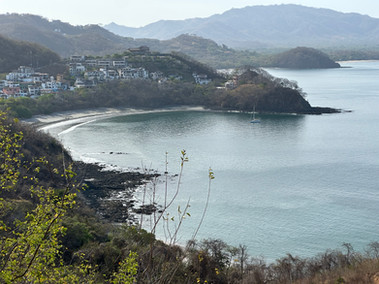





















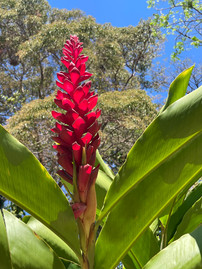



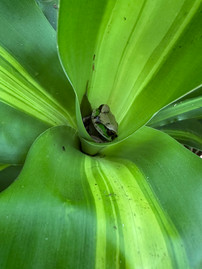





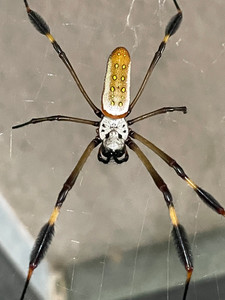









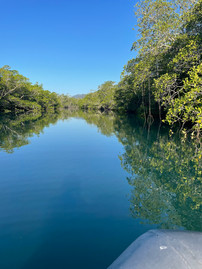

























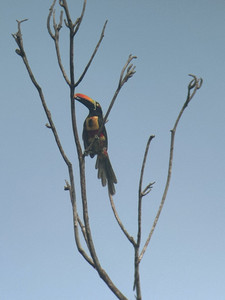

























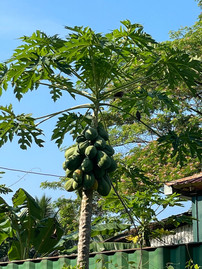



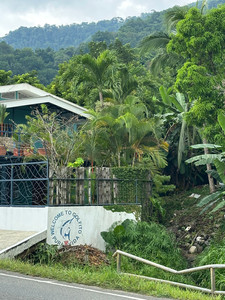



















Comments